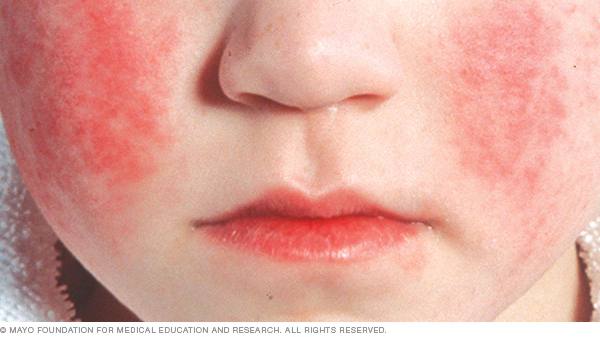-
Health & Wellness
Mayo Clinic expert explains parvovirus B19, a common childhood infection

Cases of human parvovirus B19, commonly known as Fifth disease, are on the rise, prompting the Centers for Disease Control and Prevention (CDC) this week to issue a health advisory.
Parvovirus B19 is the cause of Fifth disease, a mild rash typically seen in children, although adults can contract the virus. Parvovirus B19 affects only humans. You can't contract it or transmit it to dogs or cats. However, different parvoviruses can affect pets.
"Fifth disease is a relatively common infection in childhood," says Dr. Nipunie Rajapakse, a pediatric infectious diseases physician with the Mayo Clinic Children's Center. "It has a few names. It's caused by a virus called parvovirus B19."
For most children, symptoms are mild.
"The most common symptoms that children will usually have with this infection are fever, maybe some runny nose and then a characteristic rash that usually turns their cheeks bright red, and then they may develop a more kind of lacy-looking rash on their extremities and trunk," she says.
Watch: Dr. Nipunie Rajapakse explains parvovirus B19
Journalists: Broadcast-quality sound bites with Dr. Rajapakse are available in the downloads at the end of the post. Please courtesy: "Mayo Clinic News Network." Name super/CG: Nipunie Rajapakse, M.D./Pediatric Infectious Diseases/Mayo Clinic.
Adults infected with parvovirus 19 may have different symptoms than children.
Joint pain or swelling is less common but more frequent in adults. The virus also can temporarily stop the body from making new red blood cells, leading to anemia. People with sickle cell disease and weakened immune systems are at higher risk.
Dr. Rajapakse says parvovirus B19 spreads through respiratory secretions, such as contact with droplets from an infected person's cough or sneeze.
The virus can spread through blood and from a pregnant woman to her child. If a pregnant person suspects exposure to parvovirus B19, they should tell their healthcare team as soon as possible due to potential rare fetal complications if the mother lacks immunity.
"Parvovirus B19 is a viral infection that is quite common in childhood. If you test them, most adults show signs that they had this infection when they were a child," says Dr. Rajapakse. "The rash usually isn't causing too many symptoms, so it doesn't need any specific treatment. And as the child's body fights off the virus, the rash usually resolves along with that."
Prevention
There are no vaccines or medications to prevent infection, but there are ways to reduce your chances of getting infected or transmitting the infection to others.
- Wash your hands often with soap and water for at least 20 seconds.
- Practice good hand hygiene by covering your mouth when coughing or sneezing.
- Avoid touching your eyes, nose, or mouth.
- Avoid close contact with people who are sick.
- Stay home and avoid others when you are sick.
Parvovirus B19 affects only humans. You can't contract it or transmit it to dogs or cats. However, different parvoviruses can affect pets.
Fifth disease, or erythema infectiosum, got its name from being the fifth in a list of childhood illnesses known for causing a rash, according to the Centers for Disease Control and Prevention (CDC).
In the U.S., the virus peaks in winter and spring. The CDC reports mini outbreaks every three to four years.
Related posts:
- Mayo Clinic Minute: Childhood vaccines – moving the needle up
- Mayo Clinic Q and A: Childhood eczema
- Know the signs of strep throat in children







